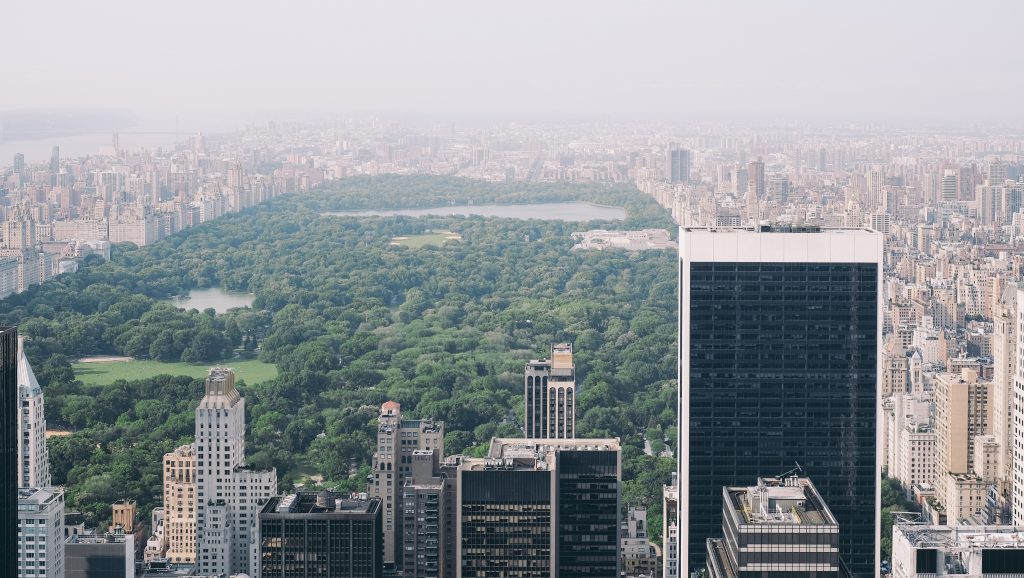
Sustainability for All?: Green Gentrification and Environmental Justice
Author: Yuki Kato, Associate Teaching Professor of Sociology
Greening the city is a good idea—right? Installing bike lanes and bikeshare docks, planting trees, and developing green open spaces for people to jog all sound like great ways to make the city more sustainable. In fact, many cities across the United States, including Washington, DC, are increasingly implementing urban designs that enhance sustainable resilience against climate change. Green infrastructure mitigates storm-water runoff by planting trees and shrubs whose roots will retain and filter water after the heavy rainfalls, as we anticipate more severe weathers with the change in climate. Tree canopies can decrease heat island effects in the city by creating shade and reducing air pollution.
But application of these technique in an effort to make cities more sustainable has not necessarily been executed with social justice in mind. In some cases, this could make the living conditions worse for some urban residents. These individuals typically live in communities of color and low-income neighborhoods. I want to highlight few ways in which these measures enhance, rather than ameliorate, environmental injustices in the city, and why we must critically examine the social impacts of sustainability policies.
Green gentrification scholarship has developed quickly over the last few years. Sarah Dooling’s 2009 article on “ecological gentrification” was one of the first studies that identified the cooptation of sustainability rationale into the urban redevelopment logic. Her study illuminated how the removal of the encampment of unhoused population from the public space was justified in the name of creating greener public spaces for the domiciled population. Since then, scholars on this topic have been arguing that the rhetoric of greening has been used to accelerate urban growth and development. In short, making the city sustainable is not necessarily for enhancing its climate-change resilience in the long-term, but more immediately for attracting more businesses and wealthy, educated people. Whether or not this is an explicit intention of the city’s environmental policies, the trend is real and is only increasing in its scale and scope.
Environmental Justice (EJ) perspective will help us understand these dynamics and unintended consequences of environmentalism. EJ activism and scholarship shed light on how structural injustices create an unequal environmental burden that the marginalized communities bear, even though these communities are the least likely to have contributed to the environmental damages. EJ activism has identified and protested location of LULUs (locally-unwanted land uses) such as landfill, incinerators, toxic contaminants and prisons in low-income communities of color, in both urban and rural areas. In a less dramatic yet equally troubling trend, greening of formerly grey areas in the city (e.g., high rates of vacancy, poor housing conditions, low tree counts) is tied to property value hike, shifting retail landscape, and residential demographic turnover. With many new luxury condominiums, built in formerly affordable neighborhoods, boasting LEED (Leadership in Energy and Environmental Design) certification and proximity to well-maintained green spaces (e.g., dog parks and community gardens), the mantra of “green it and people will come” seems to be working. We must pause, however, and ask—what happened to the people who used to live there? They are being priced out and moving into the areas that are less sustainable, environmentally and economically.
While race and class inequalities may be the most obvious impact of urban sustainability, reproducing, or even exacerbating, social injustices, gender, and intersectional inequalities must not be overlooked. While attending a recent conference at Princeton University titled “Green Cities: Inequality, Space, and Sustainability,” I came across multiple studies pointing to the gendered nature of the work that is being done in a neighborhood-level environmental efforts, such as planting trees or rain gardens. These efforts typically took place in lower-income communities of color, which made this an intersectional burden that these women were bearing on their shoulders by volunteering their time to make the city more sustainable, green, and livable. These works are concrete and visible application of the theories and knowledge on how to make the cities better for all, yet over and over we see the works of these women undervalued and taken for granted. Women from the community are doing the work out of their good citizenry (or love), we are lead to believe, thus they do not need to be paid, while the corporate contractors are economically compensated for the legitimate sustainability jobs and find career mobility in the industry. Again, another missed opportunity to create sustainable opportunities to those who have historically been excluded from the formal labor market.
So… is making the cities sustainability a good idea? Of course, but not for all in the way it’s currently being implemented in most American cities, and we must make this a central concern in addressing urban sustainability, rather as an afterthought.